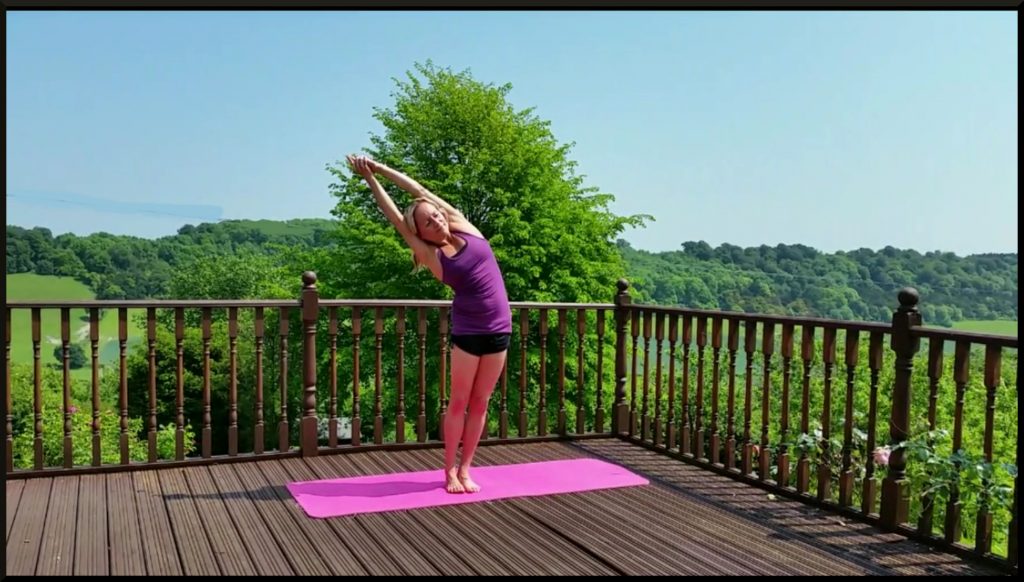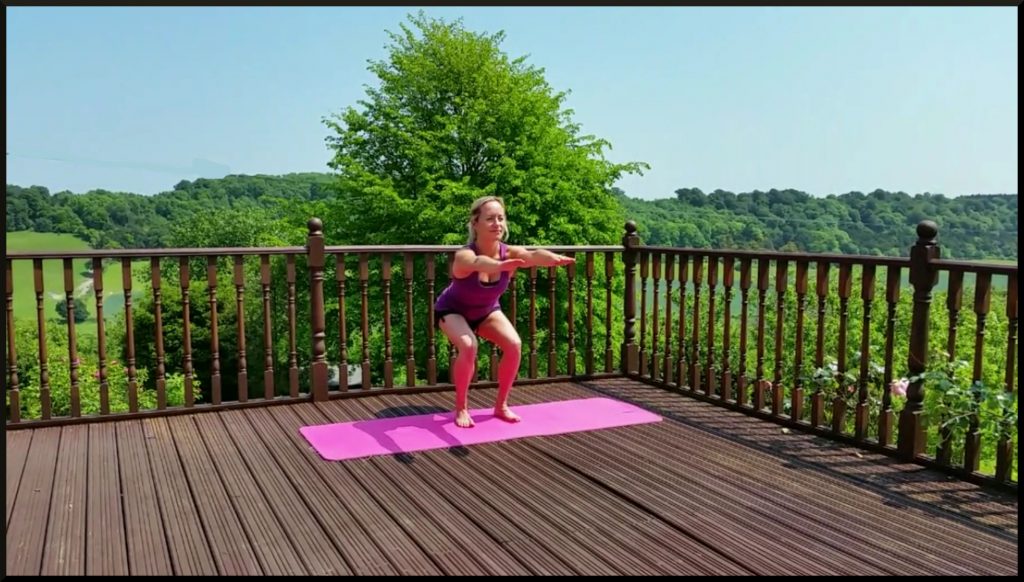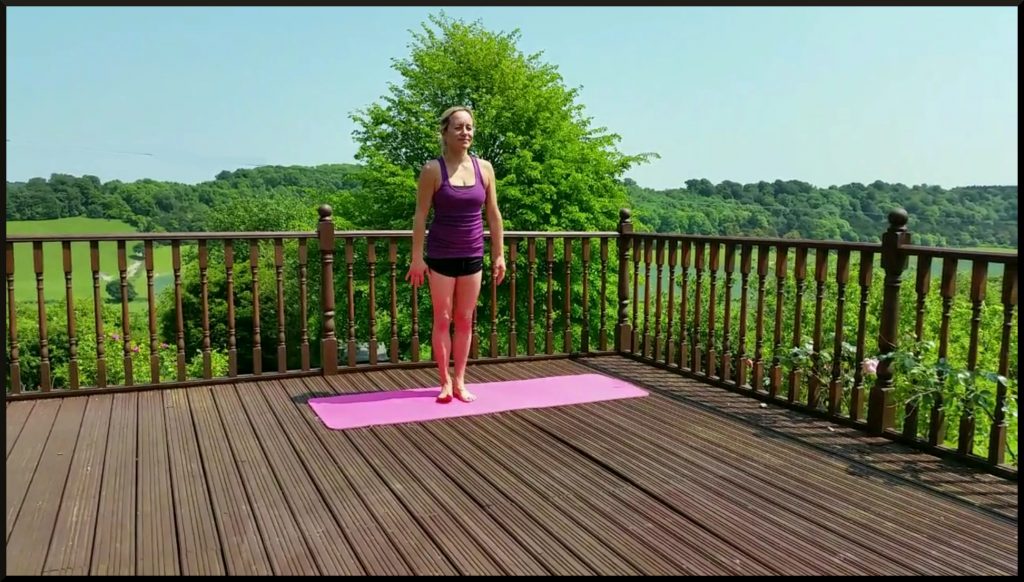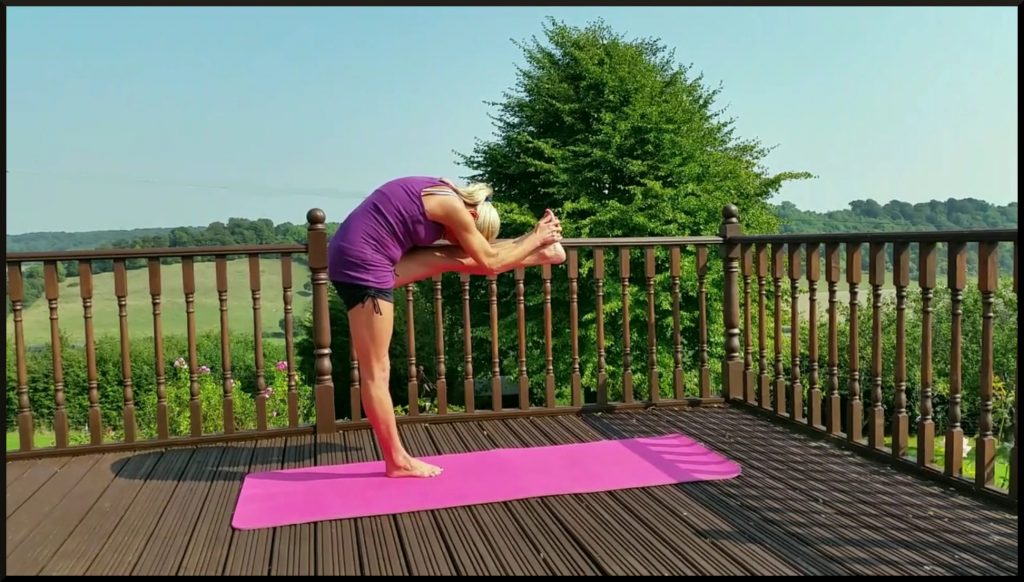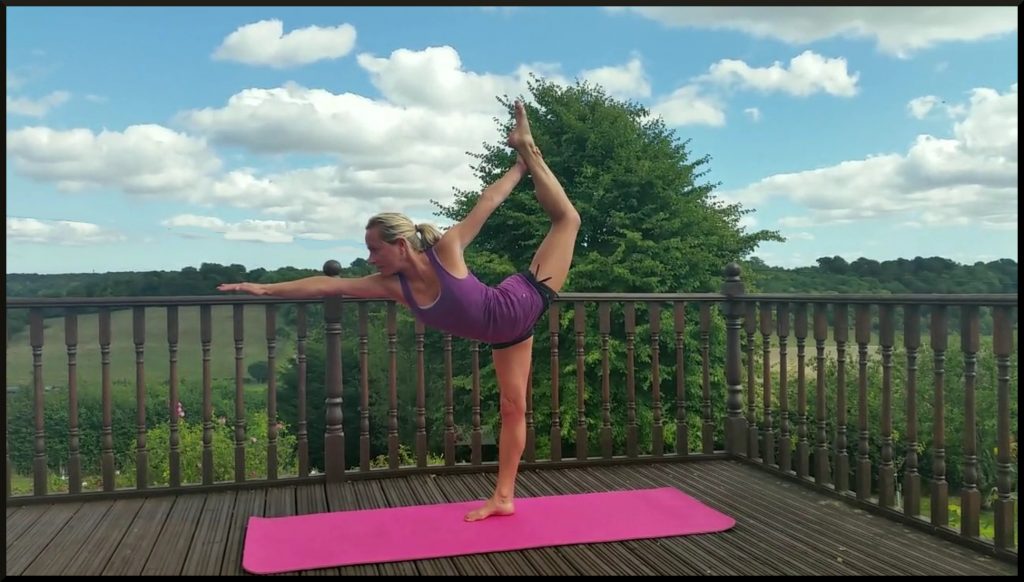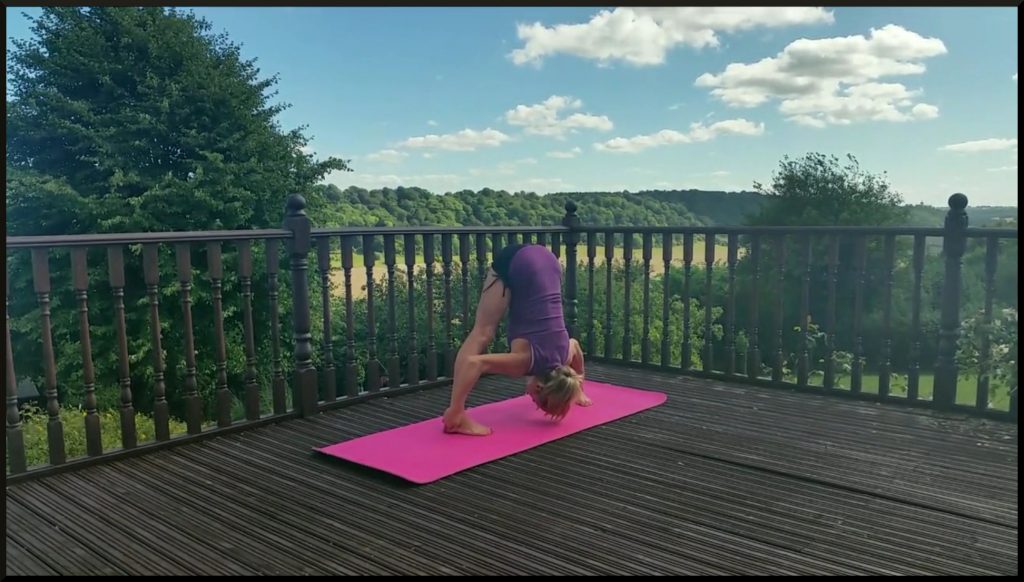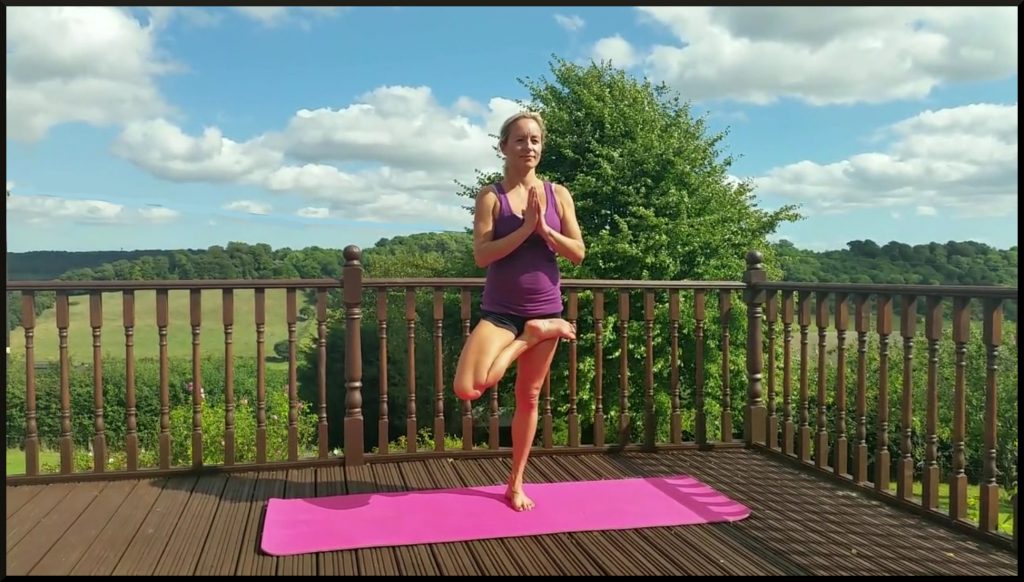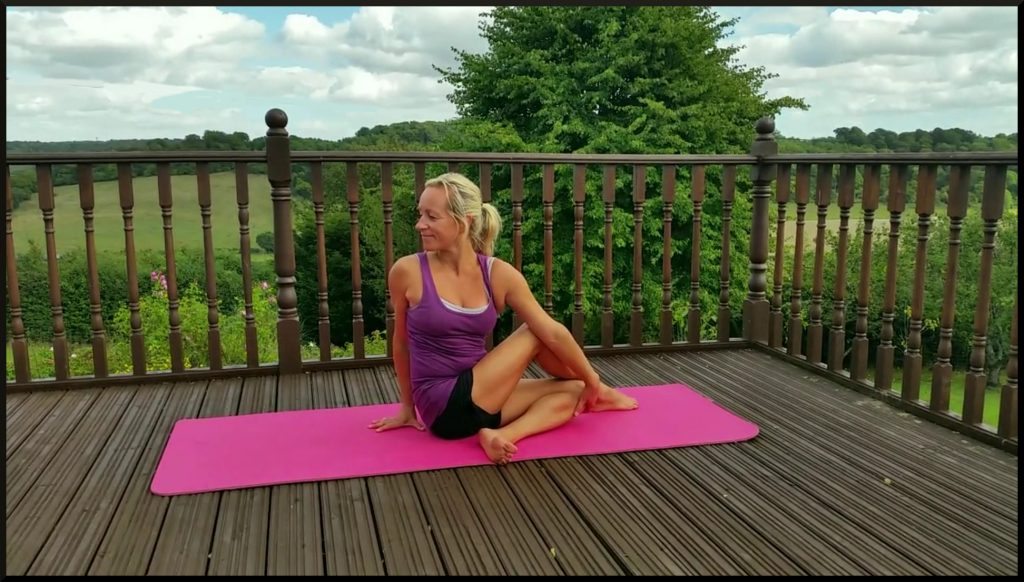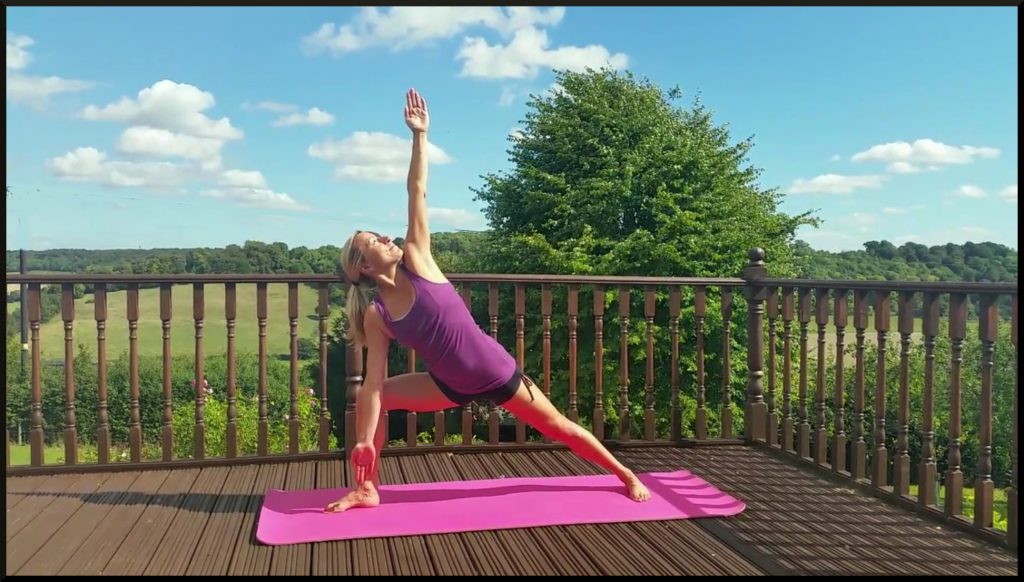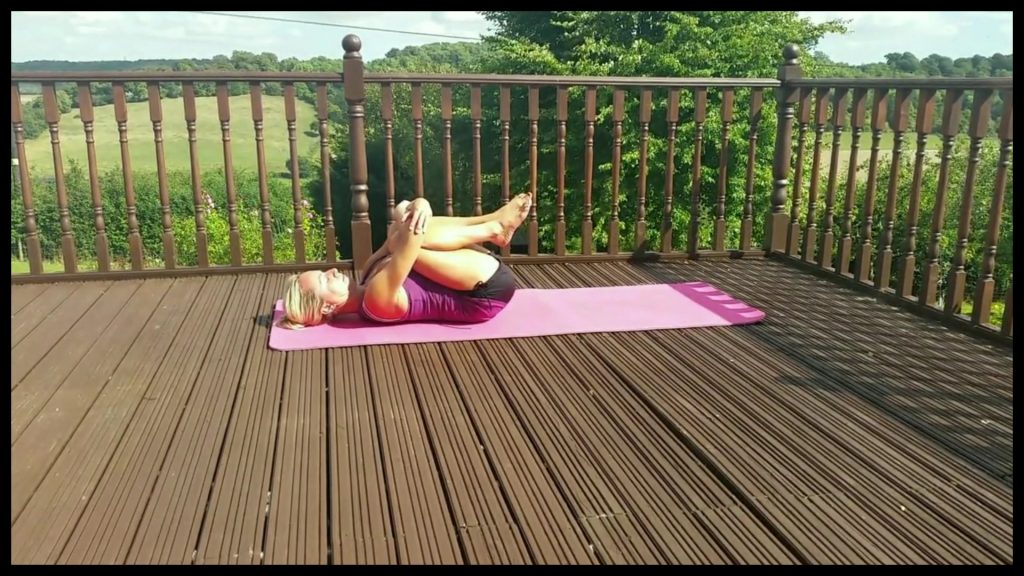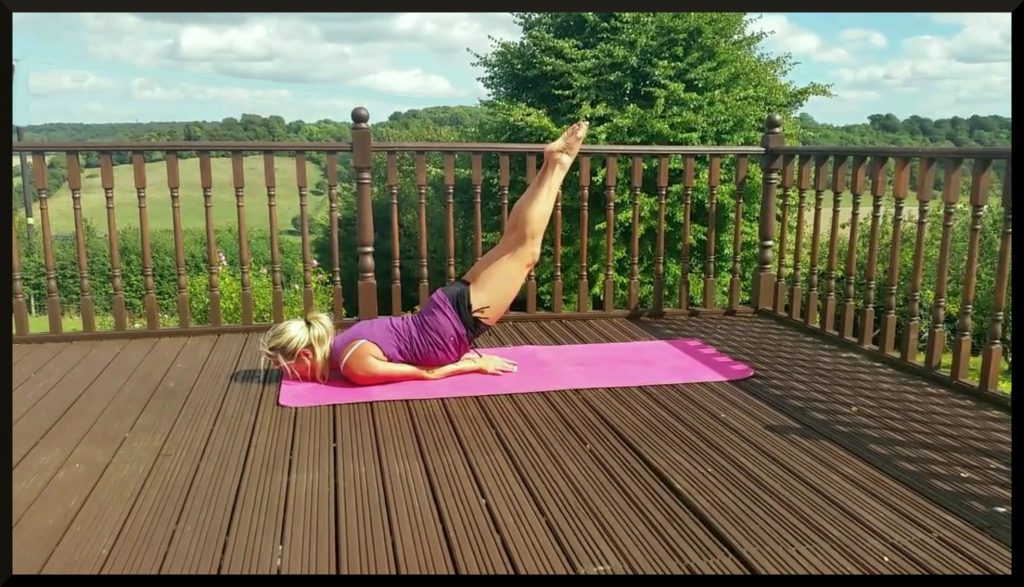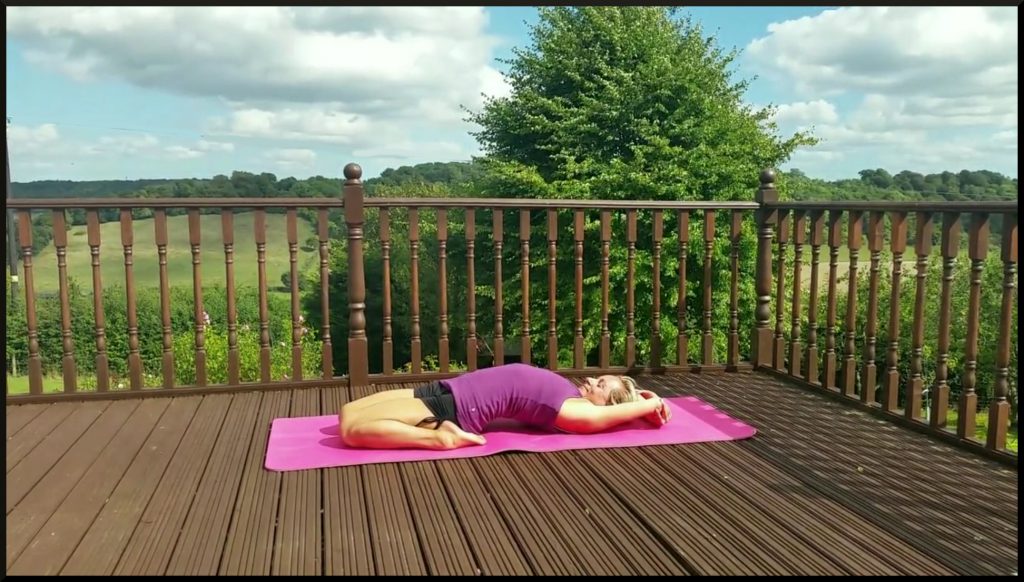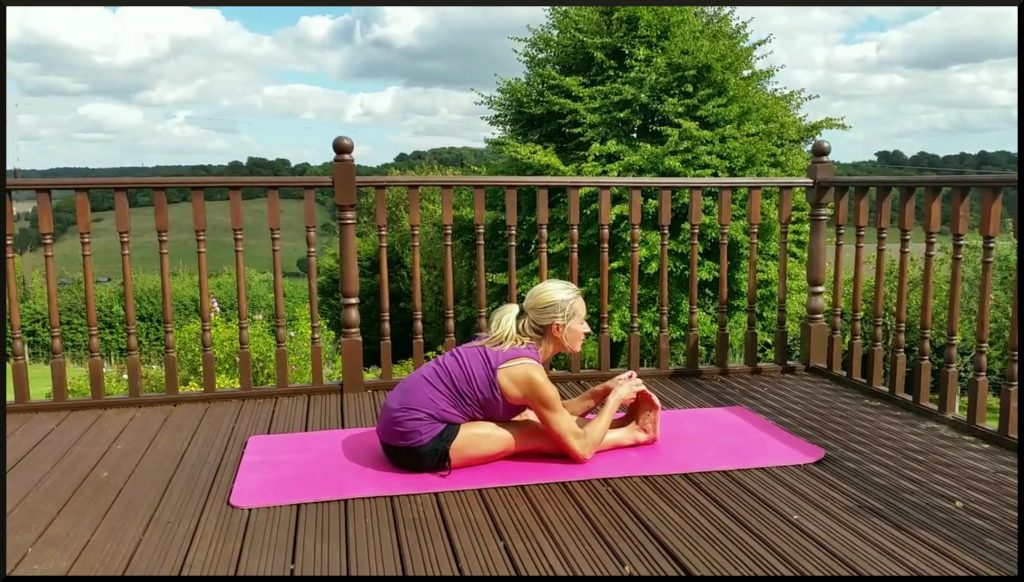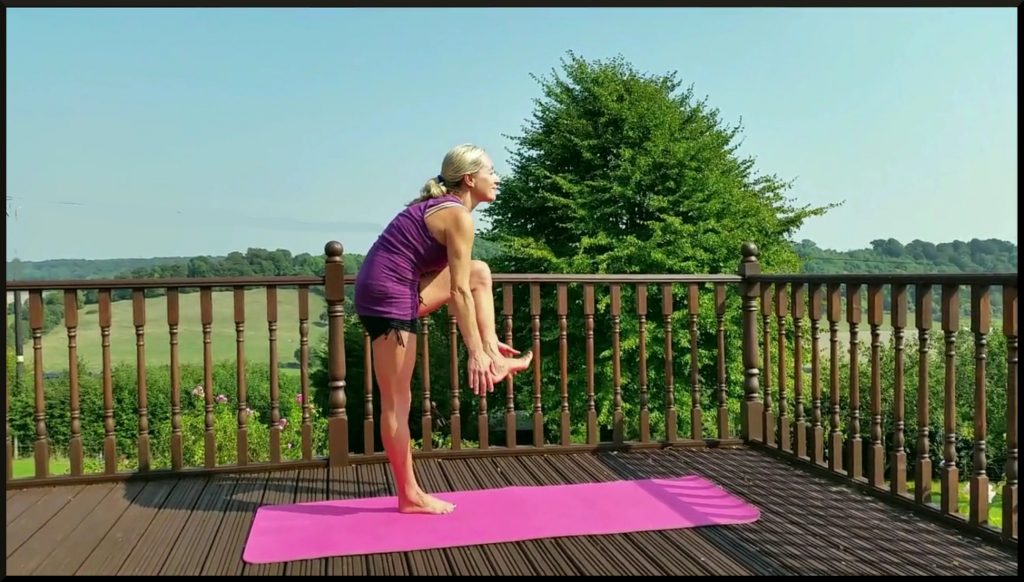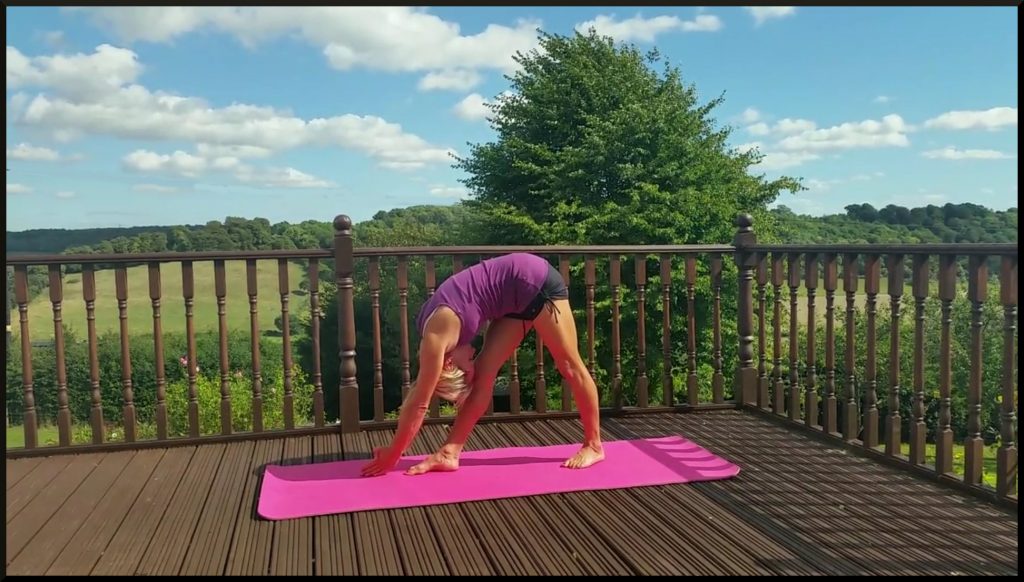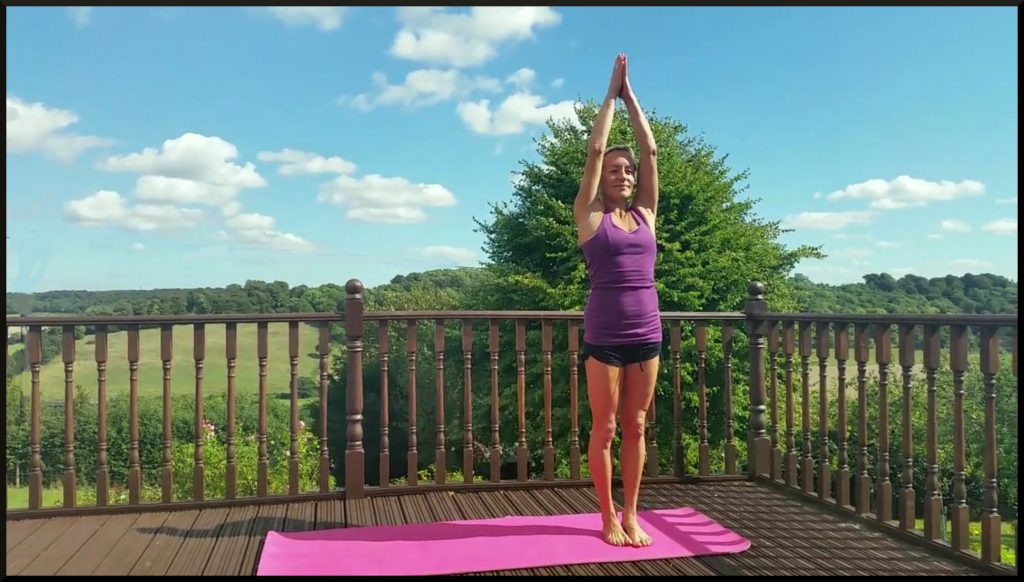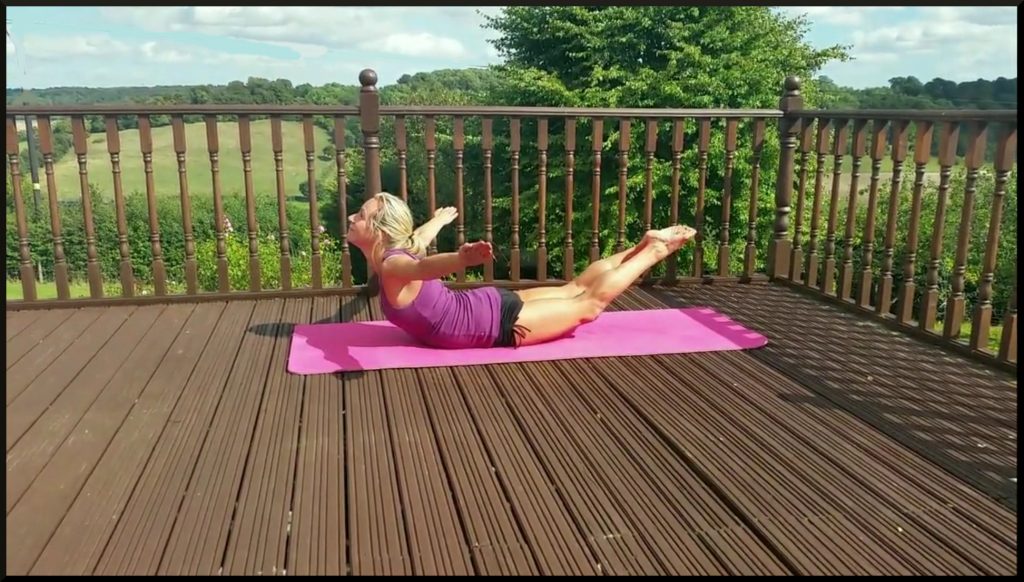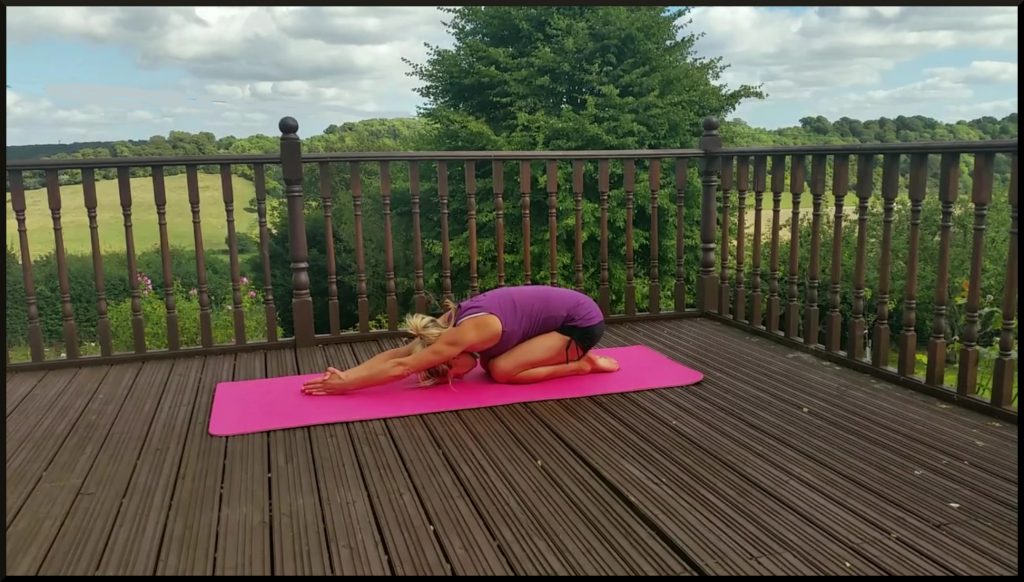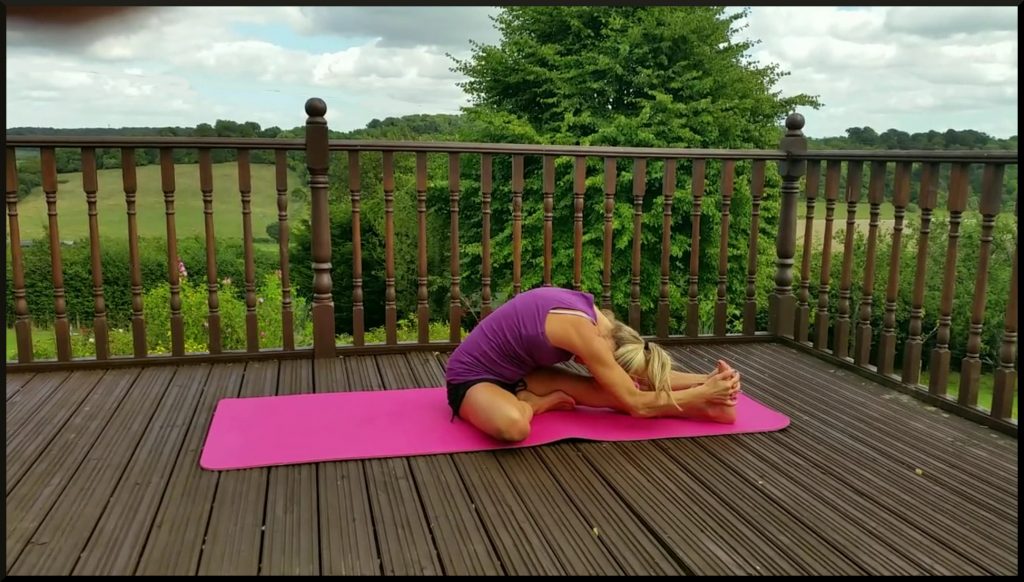Demonstration Videos
Heidi is developing a series of videos demonstrating and explaining some of the postures she uses during a typical Hot Yoga session. The first of the video's can be accessed from the list below, along with an extended sequence that you could follow. Before accessing the videos please read the following advice. Accessing the video's will indicate that you have read the advice and are confirming that you are happy to continue.
Standing Deep Breathing: Pranayama
* Breathe slowly
*Back straight, suck in stomach
*Keep eyes open
Benefits:
This exercise expands the lungs and increases mental relaxation and blood flow. A great exercise to do before beginning your practice.
Half Moon Pose with Hands-to-Feet Pose: Ardha Chandrasana with Pada Hastasana
*Keep arms straight and palms together
*Keep lower body straight
*When backbending, try not to collapse into lower back
*In Hands-to -Feet Pose, keep upper body on lower body and try to get elbows as close together as possible
Benefits:
This posture warms up the spine and improves posture. It also exercises the circulatory, glandular, pancreatic, muscular, respiratory, renal and skeletal systems. Anxiety and stress are also lessened.
*Keep shoulders down
*Keep feet parallel
*Breathe evenly
Benefits:
This posture warms up and strengthens the lower body and sends fresh blood to the knees and ankles. Hip flexibility is increased and the posture also helps with lower spine problems.
*Engage core
*Keep palms together
*Squeeze knees and thighs together
*Bring weight into heel
Benefits:
This posture works the 12 major joints of the body. It also enhances lymphatic functions and improves balance, hip-joint mobility and the immune system.
*Each Posture should be done twice
*Hold posture 1 minute first time each side
*Second time hold for 30 seconds each side
*Warm up will take 15 to 20 minutes and can be used stand alone or as a set up for further postures
Benefits:
You should always warm up before doing any postures, see the medical advice page for further information. Room temperature is at your own choice, outside is great if the weather is good, barefoot on the ground is good grounding.
Standing Head to knee Right leg
Standing Head to knee Left leg :
Dandayamana-Janushirasana
*Evenly distribute weight over foot
*Lock knee of standing leg
*Maintain tight grip with all 10 fingers
*Suck in stomach and contract abdominal muscles
Benefits: This posture uses all the major muscle groups and improves concentration and mental strength. The following are all strengthened: tendons, hamstrings, biceps of thigh muscles, biceps, triceps, deltoids, trapezius, back muscles, latissimus dorsi and scapula.
Standing Bow Pulling Pose Right leg
Standing Bow Pulling Pose Left leg:
Standing bow pulling pose
*Hold ankle from inside with all 5 fingers
*Kick and feel the spine arching
*Keep standing leg locked
Benefits: This posture transfers circulation from one side of the body to the other and then equalizes it again. The strength and flexibility of most of the body's muscles are improved. Shoulder joints and diaphragm are opened and flexibility of the spine is improved.
Standing Separate Leg Stretching Pose
Dandayamana-Bibhaktapada-Paschimottanasana
* Toes in, heels out
* Keep spine straight
* Grab heels if possible
This posture helps to cure and prevent sciatica and releases the lower back. It also enhances the flexibility of the ankles, calves, thighs, pelvis and hip joints.
* Keep eyes open, lie still
* Heels together, toes fall open, palms face up
* Keep shoulders down, breathe slowly through nose
This posture maximizes the release of tension by completely relaxing the entire body. The mind is calmed and circulation of freshly oxygenated blood is optimized to all areas of the body.
* Keep legs and feet together
* Draw shoulders down, elbows close to ribs, arms L-shaped 90 degrees
* Use strength of legs and spine, not arms
Benefits:
This posture builds lower back strength and prevents lower back pain. It also improves upper spine flexibility and boosts concentration.
* Keep wrists and arms straight
* Release shoulders back as you lift torso
* Balance on middle part of belly
Benefits:
This posture works the entire spine and boosts circulation to the heart and lungs. It also helps to open the shoulder joints and enhances digestion.
* Use hands to support lower back and
keep chest lifted
* Keep hips forward
* Always support spine as you reverse out
This posture helps to relieve back problems. It stimulates the nervous system and flushes blood through the kidneys. The flexibility of the neck and spine are improved and the back and shoulder muscles are strengthened.
Half spine twist : Ardha-Matsyendrasana
* Keep weight forward, back hand as close
to spine as possible
* Keep both hips down and front foot flat
on floor
* Use inhale to lift, exhale to twist
This posture balances out both sides of the spine and also helps to prevent slipped discs, scoliosis, cervical spondylosis and arthritis. Lower back pain is relieved, shoulder joints are opened and thighs, abdominal muscles and buttocks are firmed.
Balancing stick
*Keep knees locked and stomach in
*Keep arms with ears - no gap
*Stretch body in opposite directions
Benefits:
This posture increases cardiovascular circulation and refines control and balance by enhancing physical and mental powers. Posture is improved and spinal stress is relieved.
* Stretch arms in opposite direction
* Touch chin to shoulder and keep shoulders down
* Keep hips down
This posture improves every joint, muscle, tendon and internal organ. Shoulder joints are opened and the buttocks and legs are strengthened.
* Keep standing leg straight until weight is in hands
* If foot of folded leg slips, hold with opposite hand
* Move slowly
Benefits:
This posture strengthens joints, stomach muscles, bisceps, triceps and shoulders. It also builds balance, concentration, core strength, focus and patience.
Wind Removing Pose: Pavanamuktasana
* Keep grip tight
* Keep chin in, head on floor
* Use arm strength to deepen stretch, keep shoulders down
This posture massages the ascending, descending and transverse colon which helps to enhance the body's nutrient absorption and regulates levels of hydrochloric acid in the stomach. The shoulders and entire back side of the spine are stretched. The hip joints are also opened.
* Keep palms down, fingers spread
* Keep legs straight
* Chin forward for first two parts, head down for third part
Benefits:
This posture builds upper back strength and improves flexibility in the lower spine. It also boosts circulation and helps to cure tennis elbow.
* keep knees on floor, separate them if
easier
* only go back if hips on floor
* keep feet straight
This posture heals and improves weak/injured knees and relieves lower back pAin. It also strengthens and enhances the flexibility of ankles, knees and lower back.
Rabbit:Sasangasana
* Come into pose on an exhale, keep chin
to chest forehead to knees
* Once head is on floor, don't move it.
Move knees in if needed
* Only maximum 20% weight on head
This posture balances out the spine after camel. It nourishes the nervous system by maximally extending the spine. The metabolism is also regulated.
You should always warm up before doing any postures, see the medical advice page for further information.
The sequence shown here follows a pattern of single leg balancing postures that will help strength and coordination but will also grow concentration and coordination.
Remember yoga practice is just that, if you fall out of a posture before you intend, draw in your focus and move steadily and carefully back into the position.
Ideally each posture is done right leg then left leg for one minute each the repeat, this time for 20 seconds before moving on to the next. These video's show Heidi demonstrating each posture individually but are not held for the full time.
Standing Separate Leg Head to Knee Pose
Dandayamana-Bibhaktapada-Janushirasana<
* Bend knee as much as needed to maintain forehead on knee
* Keep arms and back leg straight
* Keep hips level
This posture helps to alleviate diabetic disorder and balances blood sugar levels. The thyroid is stimulated which aids the immune system and metabolic functions. The abdominal muscles and legs are also strengthened.
Included in this group is the master posture of the standing series, triangle pose. This sequence should help the heart rate to slow down allowing deeper postures and preparing for the floor sequences which you can do after a short savasana.
* Keep chin tucked in
* Keep leg and abdominal muscles engaged
* Keep arms with ears when sitting up
This posture helps to strengthen the abdominal and leg muscles. The hamstrings are also stretched.
Full Locust: Poorna-Salabhasana
* Keep legs, knees and feet together
* Keep gaze lifted, remember to breathe
* Arms back, fingers in line with shoulders, palms face down
Benefits:
This posture helps to improve function of the liver and spleen and firms muscles of the thighs, hips, abdomen and upper arms. It also strengthens deltoids and trapesius
Half Tortoise: Ardha-Kurmasana
* Use abdominal strength to come down, if
forehead doesn't reach floor, lift hips up
* Keep arms engaged, squeeze palms of
hands together
* Keep chin away from chest
This posture helps to relax body and mind. It boosts blood circulation to the brain and also stretches the spine, hips and gluteal muscles. Abdomen is also strengthened.
Head to knee with stretching : Janushirasana with
Paschimottanasana
* Head to knee - bend knee if needed to
get forehead on knee and keep toes
flexed. Maintain tight grip
* Stretching - keep spine straight, bend
knees if needed
* Use strength of arms to go deeper
This posture balances blood sugar levels and metabolism and also boosts circulation to the liver, pancreas and spleen. The hamstrings are deeply stretched and lower back is extended ( especially last 5 vertebrae).
"We keep moving forward, opening new doors, and doing new things, because we're curious and curiosity keeps leading us down new paths."
- Walt Disney


